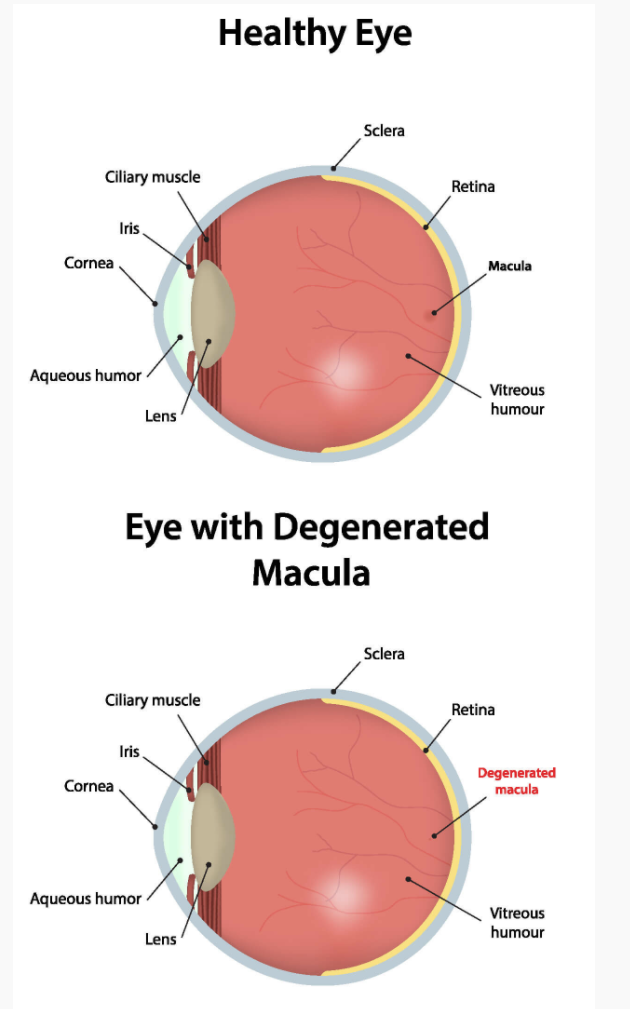Age-Related Macular Degeneration
Turn back The Clock By Returning Vision
What is Macular Degeneration?
Age-related macular degeneration (ARMD) is a deterioration of the eye’s macular region. The macula is the part of the retina that is responsible for your central vision, allowing you to see fine details clearly. The macula makes up a small part of the retina, but it is much more sensitive to detail than the rest of the retina.
There are two types of macular degeneration: dry macular degeneration and wet macular degeneration. Most people who have macular degeneration have the dry form. Macular degeneration usually begins when tiny yellow or white pieces of fatty protein called drusen form under the retina. Eventually, the macula may become thinner and stop working properly. The dry type of ARMD may transform to the wet form of ARMD which leads to edema and hemorrhage as well as severe central visual loss.

Symptoms
• Blurry distance and/or reading vision
• Need for increasingly bright light to see up close
• Colors appear less vivid or bright
• Hazy vision
• Difficulty seeing when going from bright light to low light (such as entering a dimly lit room from the bright outdoors)
• Trouble or inability to recognize people’s faces
• Distorted vision — straight lines will appear bent, crooked or irregular
• Dark gray spots or blank spots in your vision
• Loss of central vision
• Size of objects may appear different for each eye
Risks
• Family history
• Smoking
• High blood pressure
• Abnormal cholesterol
Not Sure If It's Age-Related Macular Degeneration?
Schedule An Eye Exam

Treatment for Age-Related Macular Degeneration
Scientific study has shown that antioxidant vitamins and zinc may reduce the impact of dry ARMD in some people by slowing its progression toward more advanced stages.
Treating the wet form of macular degeneration may involve the use of anti-VEGF treatment, thermal laser treatment or photodynamic therapy (PDT). Treatment of wet macular degeneration generally reduces the risk of severe vision loss.







